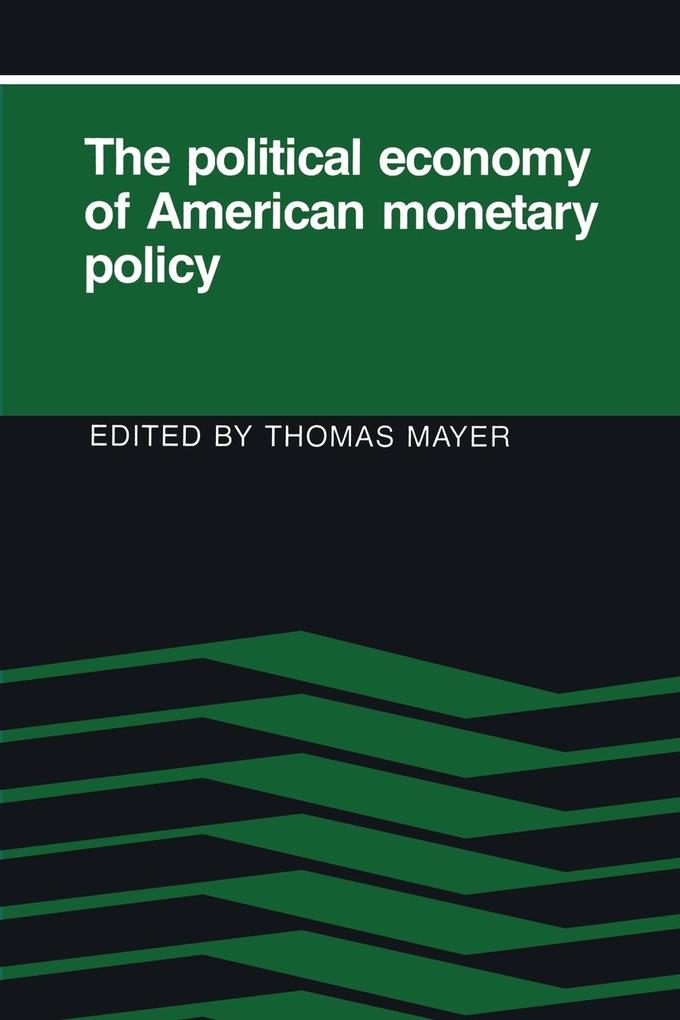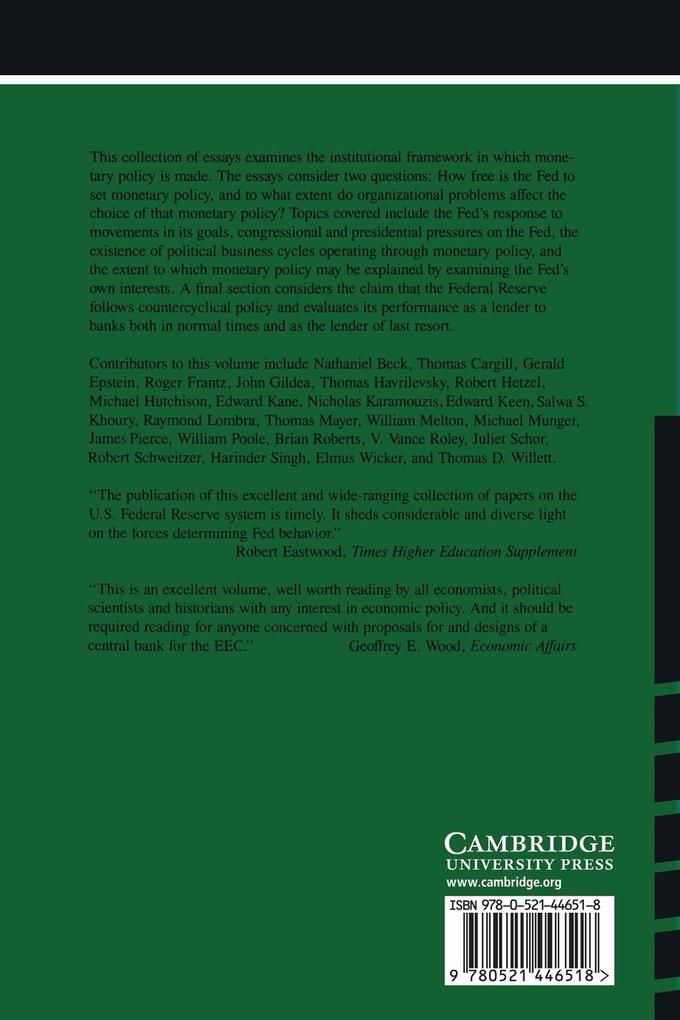An analysis of the role of the Federal Reserve in monetary policy making in the United States.
Inhaltsverzeichnis
Preface; 1. Introduction Thomas Mayer; 2. Studying the Fed: towards a broader public choice perspective Thomas Willett; 3. The Federal Reserve reaction function: a specification search Salwa Khouri; 4. Corporate profitability as a determinant of restrictive monetary policy: estimates for the post-war United States Gerald Epstein and Juliet Schor; 5. Federal reserve behavior since 1980: a financial market perspective William Melton and V. Vance Roley; 6. The Federal Reserve and its institutional environment: a review Michael Munger and Brian Roberts; 7. The political economy of monetary policy Robert Hetzel; 8. Political monetary cycles Nathaniel Beck; 9. Congress and the Fed: Why the dog does not bark in the night Nathaniel Beck; 10. The Federal Reserve as a political power James Pierce; 11. Monetary policy and political economy: the Federal Reserve and the Bank of Japan Thomas Cargill and Michael Hutchinson; 12. A positive analysis of the policymaking process at the Federal Reserve Raymond Lombra and Nicholas Karamouzis; 13. A theory of FOMC dissent voting with evidence from the time series Thomas Havrilesky and Robert Schweitzer; 14. Explaining FOMC members' votes John Gildea; 15. Fed behaviour and X-efficiency theory: toward a general framework Harinder Singh and Roger Frantz; 16. Minimizing regret: cognitive dissonance as an explanation of FOMC behavior Thomas Mayer; 17. The discount window William Poole; 18. Leaning against the wind: the behavior of the money stock in recession and recovery, 1953-8 Elmus Wicker; 19. Bureaucratic self-interest as an obstacle to monetary reform Edward Kane; Index.











